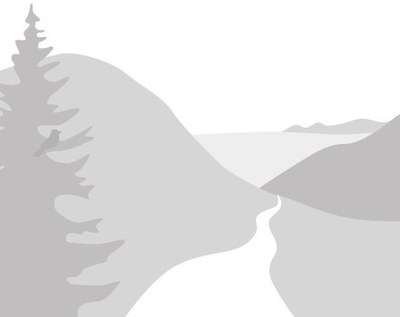
Trip Report
Mount Ellinor (winter)
- Mon, Apr 25, 2016
- Scrambling
Trip: Mount Ellinor via winter route (winter chute)
Trip Date: Sunday April 24th 2016
Trip Log: http://www.movescount.com/moves/move102687836
Road Access:
Road to the lower trailhead is snow-free.
Road to the upper trailhead is snow-free, but there is a tree down 100 meters (100 yards) from the trailhead --as reported by climbers.
Trail Conditions:
Trail is snow-free to ~1,340 m (4,400 ft), about 150 meters before the Summer-Winter junction. There’s still a deep snowpack at the junction, as well as the base of the chute. Snowpack is 2 meters below the “Summer Trail” sign.
The winter chute has a deep carved glissade luge. Due to heavy traffic in the chute, it’s “tore up”.
Leader reflections:
Snowshoes are not needed --they were prohibited, as it was a springtime snowpack travel exercise.
Microspikes were not needed.
Crampons are required --i.e. Mountaineers. Though the foolheartedly had none --i.e. ‘Public’.
The winter chute requires careful scouting for potential glissading down. There’s already a substantial branch sticking out within the luge --lower section. Also, there’s a (human-eating) hole forming right in the middle of the luge about half-way up. My advice would be to avoid the luge in icy or hard-pack conditions. If the snow has softened up, you may consider doing sections of the luge based on your scouting.
Since the group was ahead of a tentative schedule, I proposed a reroute/detour to view the Mount Ellinor-Mount Washington traverse couloir. Timing was perfect as we got to the knob just above the couloir, the fog/clouds cleared for a spectacular view of Mount Washington. (Now I daydream of a Mount Washington-Mount Ellinor winter traverse). Detour afforded more experience with side slope travel circumnavigating the bowl, and eventually ice-ax arrest with crampons on.
All-in-all, ascending was easy. Descending was a totally different matter, specifically for the top section of the chute just below the bowl. The snow didn’t soften up that much, and because it’s all tore up, it made descending difficult for some. Safest method of travel was down-climbing with ice-ax belay, until lower down, where the snow become soft enough for plunge stepping down.
We did glissade sections of the winter chute, but mostly stayed out of the luge.
GREAT TRIP!
Hazards:
Winter chute is tore up.
Winter chute luge is hazardous.
Beware of moats!
Top section of the winter chute, just below the bowl is steep. A failed ice-ax arrest would have consequences.
 David Geeraerts
David Geeraerts
 admin
admin